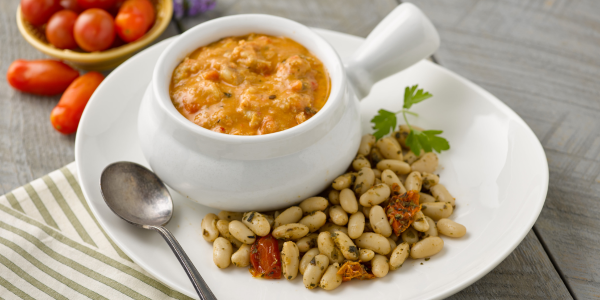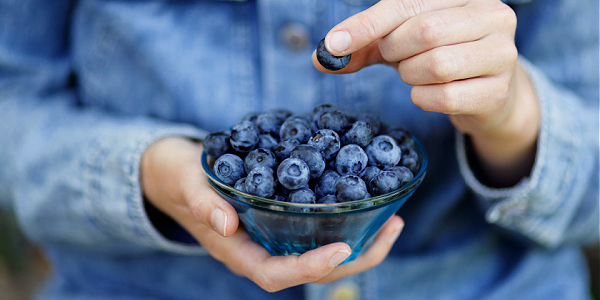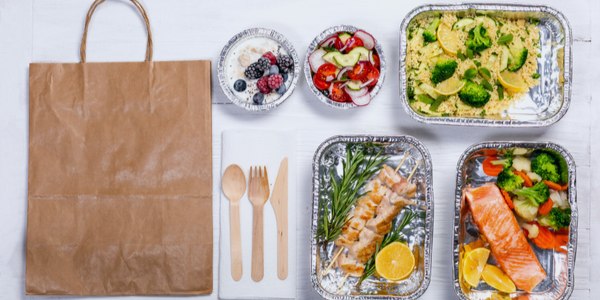
An often underrated source of protein, beans add bulk and variety to the diet. Since they are plant-based, they fit easily into many eating patterns.
From beans nutrition facts to the benefits of beans, understanding these popular pulses can help you enrich your diet. Join us as we explore how to enjoy beans and just why you should!
Nutritional Benefits of Beans
Beans are a unique type of legume, which is a scientific term used to describe a family of plants with pods. These pods' seeds or edible parts are called pulses, and beans are a type of pulse.
Foods like dried peas, split peas, and lentils are also in this category, but beans in particular are considered one of the oldest nutritional “superfoods.” Beans are rich in protein, fiber, vitamins, and minerals. In fact, beans are so nutrient-rich they technically count towards two different food groups!
Keep reading for the details on just how nutrient-dense beans are.
Rich in Fiber
Beans aren't just high in fiber but are considered an excellent source. Research has shown that increasing fiber intake is associated with healthy weight maintenance and reducing the risk for chronic diseases—like heart disease and certain cancers. However, many Americans are eating far less fiber than they should.
Fortunately, beans contain plenty of fiber and can easily be added to almost any diet. For example, one cup servings of raw pinto beans contain nearly 30 grams of fiber. If this is the first time you're increasing fiber in your diet, you'll want to drink lots of water to help move the food in your body along (since fiber helps slow digestion down).
Provides Plant Protein
Pulses, like beans, are particularly interesting regarding their nutritional profile. In general, pulses contain a protein-to-fiber ratio of approximately 1:1 and a half-cup cup serving of beans provides between 7-15 grams of protein.
You don't have to avoid animal protein—like going fully vegan or vegetarian—to enjoy beans as a source of plant-based protein, too. Since a pound of dry beans typically costs between $1.00 and $2.00, beans may simply be a more affordable source of protein for you and your family.
Count Them Towards the Vegetable Group, Too
Looking to maximize the nutrition in your daily meal? There's hardly a better food than beans. They count towards two MyPlate food groups: protein and vegetables.
A ¼ cup of cooked or baked beans count as a 1-ounce equivalent of protein, and a cup of beans counts as about one serving of vegetables. In other words, you can usually count beans as both a protein and a vegetable when it comes to keeping track of nutrition requirements.
Health Benefits of Beans
In addition to nutritional value, beans provide a host of health benefits.
Balance Blood Sugar
Can beans be revolutionary for heart health? Some scientists think so! Research shows that diets high in beans may reduce the risk of heart and metabolic diseases. Beans also rank low on the glycemic index, meaning they can be a great choice for someone dealing with diabetes.
Great for Gut Health
Contrary to popular belief (since beans can cause gas at first), beans actually have the power to improve digestion. Beans are a type of whole food, and whole foods are known to contribute to a healthy microbiome—or simply the gut environment.
Beans have also been shown to have a protective effect on the digestive tract. They're even studied as a form of preventive nutrition against certain intestinal cancers.
Fit Them Into (Almost) Any Diet
Beans are one of the most versatile foods. They are used around the world in many styles of cooking and cuisines. Additionally, beans are a crucial part of most specialty diet patterns, including (but not limited to):
• DASH diet
• Mediterranean diet
• MIND diet
• Vegetarian diets
From camping to tailgating, beans are a common and welcome addition to most meals. Unless you participate in trending diets like Paleo or Keto, you should be able to consume beans safely.
If you have digestive distress, your doctor may recommend avoiding beans briefly. Soaking and mashing them in some way can also make them more digestible.
Different Types of Beans
The legume family is large, including beans, peas, lentils, and more. The bean family is a big one as well, including these popular picks:
• Black beans
• Black-eyed peas (not the music group!😉)
• Cannellini beans
• Fava beans
• Garbanzo beans (chickpeas)
• Edamame
• Great Northern beans
• Kidney beans
• Lima beans
• Mung beans
• Navy beans
• Pinto beans
• White beans
How to Enjoy Beans
Convinced of bean's health benefits, but the playground chant "beans, beans, the magical fruit" still holding you back from eating more? Luckily, a couple of helpful tips can help you integrate beans better into your diet without worries about experiencing gas.
Start with Smaller Servings
One of the top tips with beans is slowly adding them to the diet. This way, your body will have time to adjust to an increased intake of complex carbohydrates. Since this type of carb takes longer to digest, they can cause increased gas production.
That said, it may take a week or two to eat beans before your body adjusts. If you're gradually adding beans and still experiencing gas, continue to be patient. After eating beans regularly, these symptoms should subside after a week.
Soak & Rinse Beforehand
Soaking beans before cooking them may also help reduce the amount of compounds that cause gas. In addition, rinsing canned beans before baking can reduce the amount of sodium being added to your meal.
Don't Be Afraid to Flavor
Surprisingly, spices may also help with the digestibility of beans. Spices such as turmeric and ginger have been used as digestive aids since ancient times and were even believed to be a type of medicinal substance. In modern times, science confirms spices add color, flavor, and nutritional benefit to culinary creations.
Beans are no exception when it comes to seasonings. Thanks to their naturally neutral flavor, beans can take on the flavor of the spices added to them. In fact, beans are a staple in many cuisines worldwide and can adapt to various cultural dishes.
Canned Beans Are On The Table, Too
Struggling to eat beans and need a last-minute meal idea? Crack open a can of beans! Canned beans make a convenient side dish or a great last-minute addition to bulk up main dishes like casseroles.
Fruits and vegetables (like beans) are often canned at peak ripeness. In other words, the canned beans you're consuming likely have a similar nutrient profile as freshly picked or preserved legumes.
Be sure to look at the nutrition label and avoid any products with excessive amounts of added sodium (salt). Many commercial canned beans are available in "low sodium," "no salt added," or "heart health" varieties.
Other Surprising & Sneaky Uses
When it comes to eating more beans, thinking outside the box is helpful! Some types of beans can be eaten raw, while others should be cooked to be consumed safely. Most commonly, beans are cooked or baked in some way.
You can also include beans in some of your favorite dishes to make them more healthy. For example, chickpea (garbanzo bean) burgers can be a crowd-pleasing vegetarian alternative to animal-based burgers.
Beans can be blended, roasted, and crisped to yield new and exciting recipes each time you try them. Include beans in your meals and snacks in unique ways each day, such as:
• Chili
• Dips and salsas
• Rice dishes
• Salads
• Sandwiches or wraps
• Soups
Beans can even find a place in baked goods. Without affecting the taste or texture too significantly, beans can be pureed and added to recipes like black bean brownies.
Try sneaking beans into other baked goods and desserts to make them healthier, such as cookies, muffins, or rolls.
Benefits of Beans: Final Takeaways
Beans and legumes are a key source of protein and fiber for any healthy diet, and can enrich the diet of plant- and animal-based eaters alike. Instead of just cooked or baked beans, using them in new and unique ways—such as pureeing them for baked goods—can make eating beans more exciting.
If you're intimidated by increasing your bean intake, try starting with a small amount and working your way up to larger serving sizes.
References:
Cray L, Wray P. Boost the Benefits of Beans: Using Bean Puree in Baked Goods. Extension.usu.edu. Accessed May 2023.
Didinger C, Thompson HJ. Defining Nutritional and Functional Niches of Legumes: A Call for Clarity to Distinguish a Future Role for Pulses in the Dietary Guidelines for Americans. Nutrients. 2021;13(4):1100.
Ellis E. Are Canned Foods Nutritious For My Family? Eatright.org. Published October 2022.
Ellis E. Protein Foods for Your Vegetarian Child. Eatright.org. Published February 2018.
Larson H, Ellis E. Six Creative Ways to Enjoy Beans. Eatright.org. Published October 2021.
Mayo Clinic. Guide to beans and legumes. Mayoclinic.org. Published June 2022.
Messina V. Nutritional and health benefits of dried beans. Am J Clin Nutr. 2014;100(S1):437S-442S.
Mullins AP, Arjmandi BH. Health Benefits of Plant-Based Nutrition: Focus on Beans in Cardiometabolic Diseases. Nutrients. 2021;13(2):519.
National Library of Medicine. Healthy food trends - beans and legumes. Medlineplus.gov. Published June 2022.
U.S. Department of Agriculture. Beans, Peas, and Lentils. Myplate.gov.
U.S. Department of Agriculture. Beans, pinto, mature seeds, raw (Includes foods for USDA's Food Distribution Program). Fdc.nal.usda.gov. Published April 2019.
U.S. Department of Agriculture. Protein Foods. Myplate.gov.
Xu S, Qin L, Mazhar M, Zhu Y. Functional components profile and glycemic index of kidney beans. Front Nutr. 2022;9:1044427.







